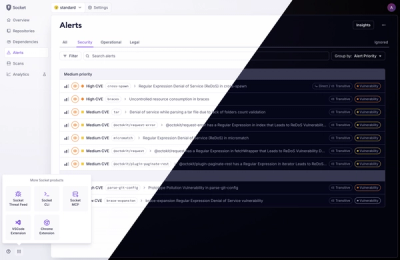css-fx-layout


This is a lightweight SCSS flexbox library. It is inspired by Angular's Flex-Layout and can replace the
most popular functions of the (by now deprecated) Angular library.
Features
This library gives you the option between using CSS classes or data-attributes. Both options give you the same features but the CSS classes can be more verbose when you want a more complex layout.
Check out the Wiki for a detailed documentation.
CSS class selectors
Using the CSS classes is more verbose but the recommended way to use this library:
.fx-layout- and .fx-align-: CSS classes to control the flexbox container.fx-gap--: CSS classes to add gaps between the elements in a flex container.show- and .hide-: CSS classes which can be used to show/hide elements depending on the screen size.fx-flex and .fx-glex-grow: Classes to control flex behaviour of an element
HTML data-attribute selectors
Using the data attributes is the easiest way to use this library and easier to migrate to from Angular Flex-Layout:
data-layout and data-layout-align: HTML attributes to be used to control the flexbox containerdata-layout-gap: attribute to add gaps between the elements in a flex containerdata-hide- and data-show-: attributes which can be used to show/hide elements depending on the screen sizedata-fx-flex and data-fx-flex-grow: Control flex behaviour of an element
Responsive API
The library provides a responsive API which allows to create different layouts for different screen sizes using known breakpoints
like xs, sm, md, lg, xl and including lt- and gt- variations of them. Please check out the Wiki
for details on how to use it.
SCSS Mixins
All functionality is also available as mixins to accompany this library or to create your own customized selectors.
Getting started
Add the library to your project's package.json:
npm i -s css-fx-layout
Then use the provided mixins in your main stylesheet to include the css-fx-layout selectors. You can choose between using CSS classes
or HTML data attributes (or, while not recommended, use both). If you want to use the layout-gap functionality you can customise which selectors
are going to be generated by providing the start, end and unit as shown in the example below.
| CSS Classes | HTML Data Attributes |
|---|
@use "css-fx-layout" as fx;
$includeResponsiveApi: true;
@include fx.class-selectors($includeResponsiveApi);
@include fx.gap-class-selectors(1, 16, px em, $includeResponsiveApi);
|
@use "css-fx-layout" as fx;
$includeResponsiveApi: true;
@include fx.attribute-selectors($includeResponsiveApi);
@include fx.gap-attribute-selectors(1, 16, px em, $includeResponsiveApi);
|
Examples
These are some basic examples how to use css-fx-layout. The file ./test/index.html contains more examples.
Layout
Example 1
This is the simplest example. It will make the div a flex container and align the three spans in a row:
| CSS Classes | Data Attributes |
|---|
<div class="fx-layout-row">
<span>One</span>
<span>Two</span>
<span>Three</span>
</div>
|
<div data-layout="row">
<span>One</span>
<span>Two</span>
<span>Three</span>
</div>
|
The resulting layout:

Example 2
An advanced example that aligns the items in reverse order with a gap of four pixels and vertically centered:
| CSS Classes | Data Attributes |
|---|
<div class="fx-layout-row
fx-layout-reverse
fx-align--start-x
fx-align--x-center
fx-gap--4px">
<span>One</span>
<span>Two</span>
<span>Three</span>
</div>
|
<div data-layout="row reverse"
data-layout-align="start center"
data-layout-gap="4px">
<span>One</span>
<span>Two</span>
<span>Three</span>
</div>
|
The resulting layout:

Example 3
Vertically and horizontally center an element in its parent.
| CSS Classes | Data Attributes |
|---|
<div class="fx-layout-row
fx-align--center-x
fx-align--x-center">
<span>One</span>
</div>
|
<div data-layout="row"
data-layout-align="center center">
<span>One</span>
</div>
|
The resulting layout:

Show/Hide
Example 4
This will hide the first span on sm sized screens and show the second span only on lg sized screens. The third span is always visible.
| CSS Classes | Data Attributes |
|---|
<div>
<span class="hide-sm">One</span>
<span class="show-lg">Two</span>
<span>Three</span>
</div>
|
<div>
<span data-hide-sm>One</span>
<span data-show-lg>Two</span>
<span>Three</span>
</div>
|
Compiled CSS
There are no pre-compiled CSS files available for css-fx-layout 2 and above.
Version 1 releases provided minified pre-compiled CSS files. If you are interested in them you can find and download them from
the releases page.
What problem does this library solve?
Initially I created this library because I liked the convenient syntax of Angular Flex-Layout and wanted to use it in non-Angular
projects and without JavaScript.
By now Angular Flex-Layout has been deprecated and this library can be a replacement for most of the popular parts.
2.1.0 (2023-01-03)
Features
This release adds a responsive API including the commonly known breakpoint sizes of Flex Layout.
In order to use the default responsive API selectors please set the bool parameter of the mixins generating the selectors to true (see the "Getting started"
in the README). It is disabled per default because it negatively affects the size of the generated code and not all projects
may need this.
- add responsive API using flex layout media sizes
- add mixins to default API
- add flex-row properties to parent containers of elements using
.fx-flex/data-fx-flex if they are missing






